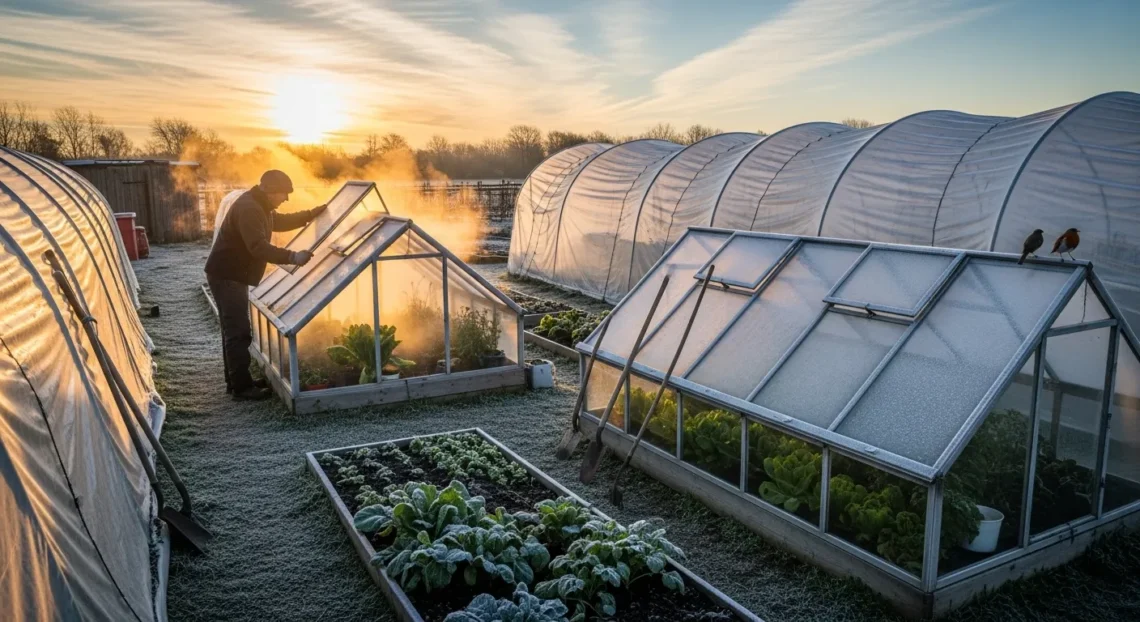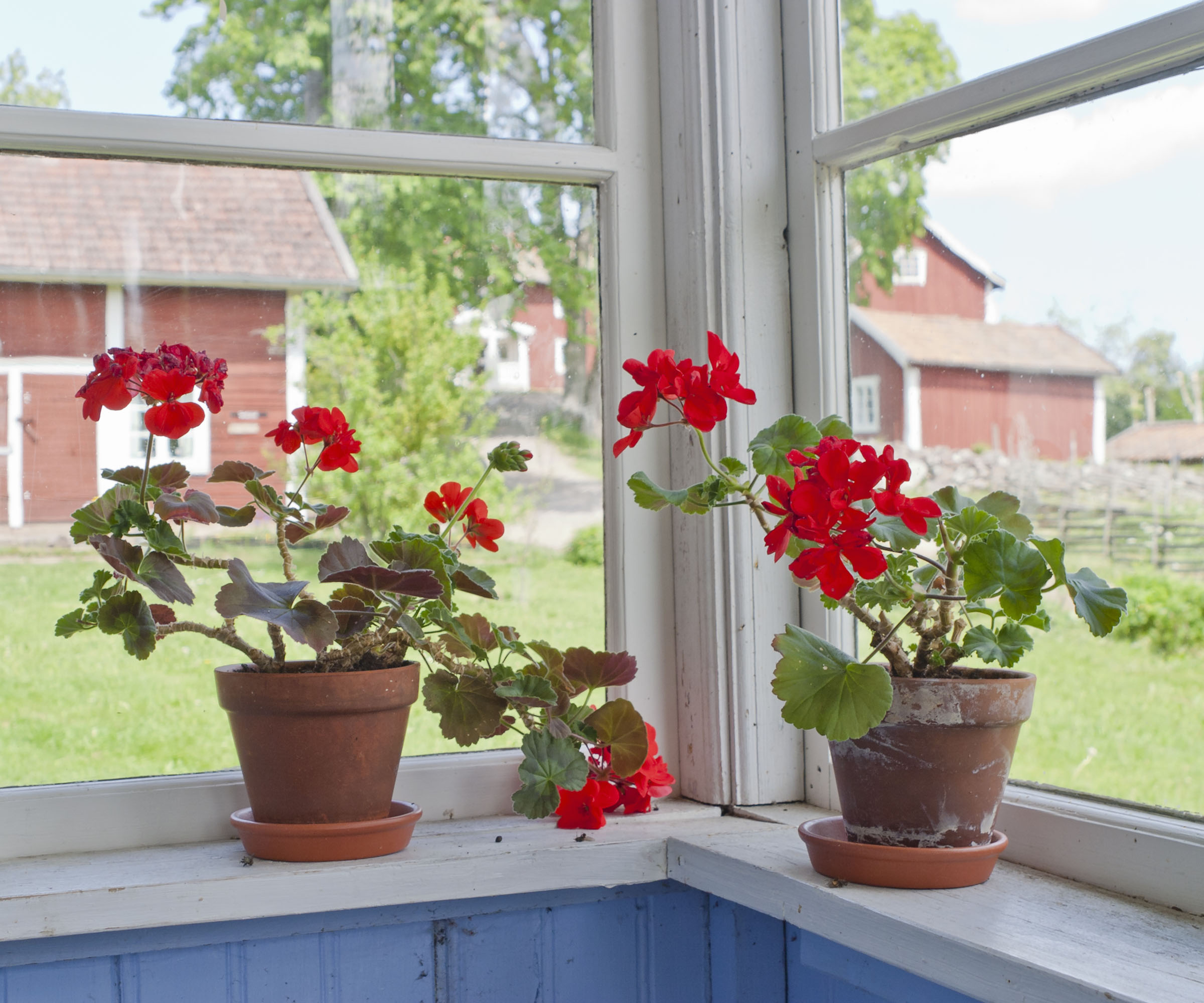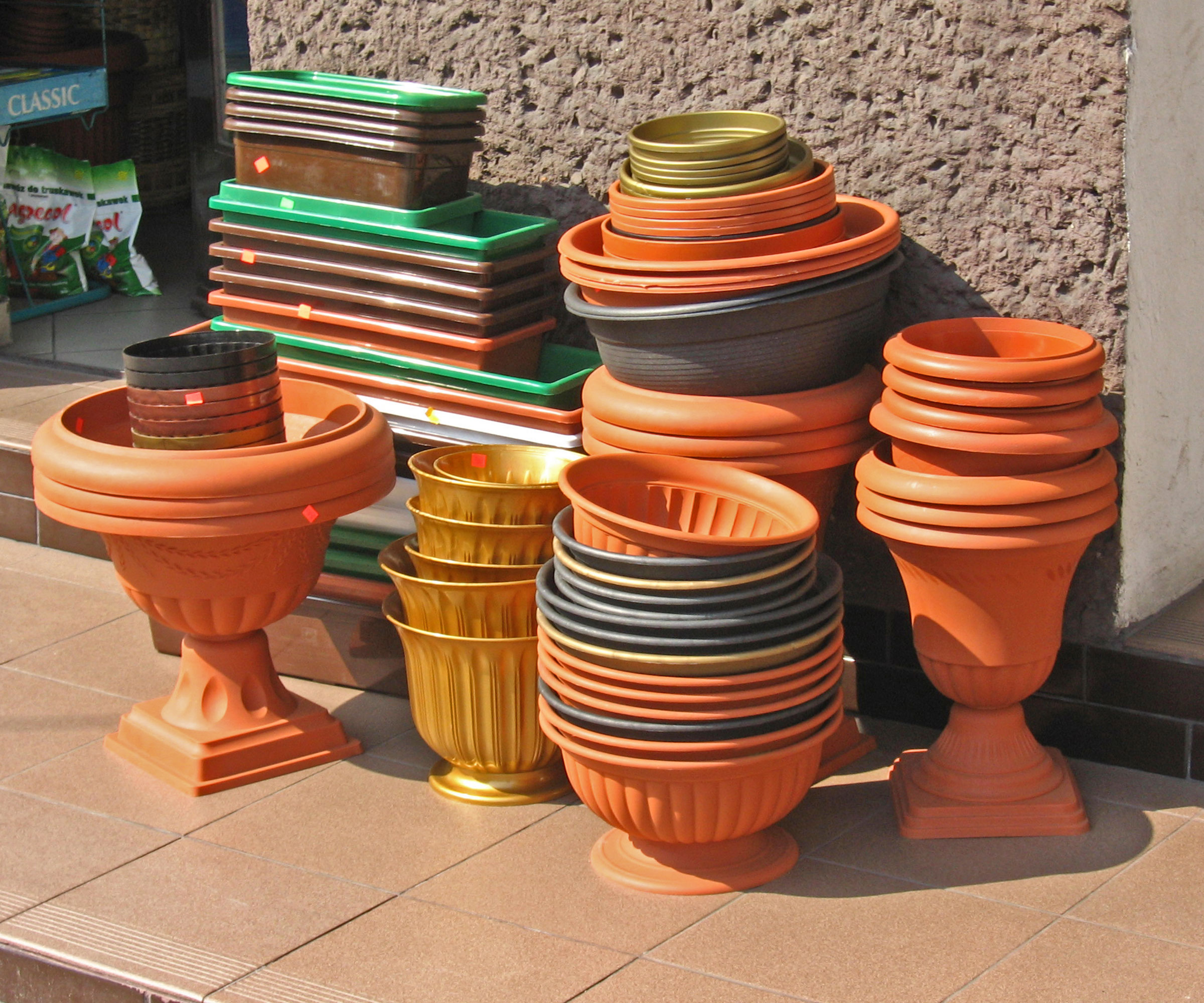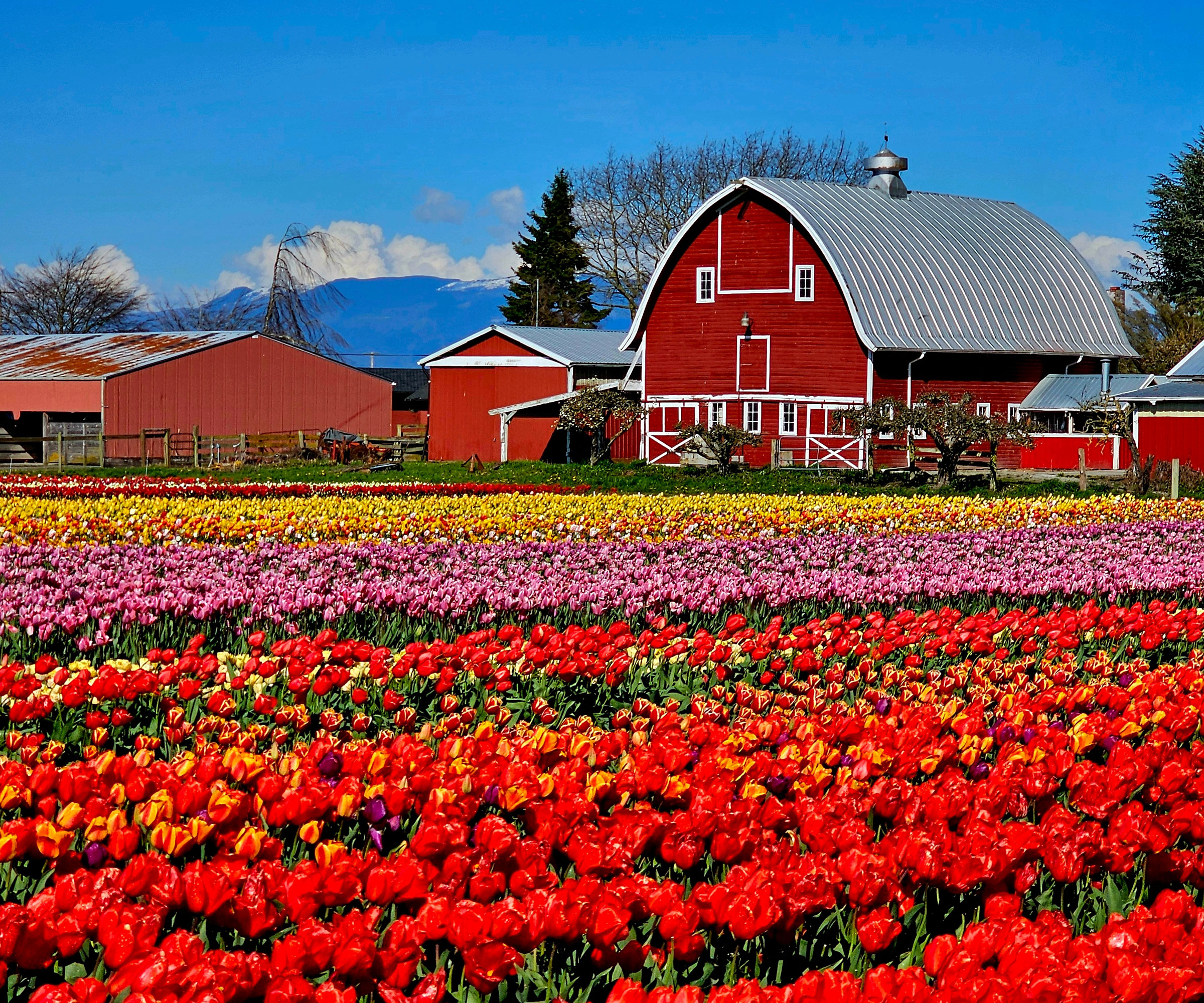Table of Contents
Table of Contents
Introduction
When the crisp air of autumn settles in and the first frosts threaten your garden, most people assume the growing season is over. But what if you could keep harvesting fresh greens, herbs, and even root crops well into winter—without investing in an expensive greenhouse? That’s where cold frame gardening comes in.
Cold frames and hoop houses are the unsung heroes of the backyard garden. They’re simple, affordable, and incredibly effective at extending your harvest. With just a few materials—often things you already have lying around—you can build protective structures that shield your plants from frost, wind, and fluctuating temperatures.
In this guide, we’ll explore three budget-friendly hoop house builds that anyone can assemble, plus a detailed planting calendar for October through December. Whether you’re a beginner or a seasoned gardener, this article will show you how to stretch your growing season, save money, and enjoy fresh produce long after your neighbors have packed up their tools.
Cold frame gardening also taps into something deeper than just extending the harvest—it’s about resilience and resourcefulness. There’s a certain thrill in walking out to your garden on a frosty December morning and lifting the lid of a cold frame to find vibrant greens thriving underneath. It feels almost like a secret, a gardener’s magic trick that defies the season.
Another twist worth noting is that cold frames don’t just protect plants from cold—they also shield them from pests that tend to linger in late autumn. Slugs, for example, are less likely to invade when your crops are tucked under a hoop house. This dual benefit of protection from both weather and pests makes cold frame gardening a strategy that pays off in more ways than one.
👉 For more winter growing inspiration, see our guide on plants to plant in winter to pair with your cold frame setup. Further expert insights, see Walden Labs’ guide on building cold frames and hoop houses, which draws on Eliot Coleman’s Four Season Farm methods.”
What Is Cold Frame Gardening?
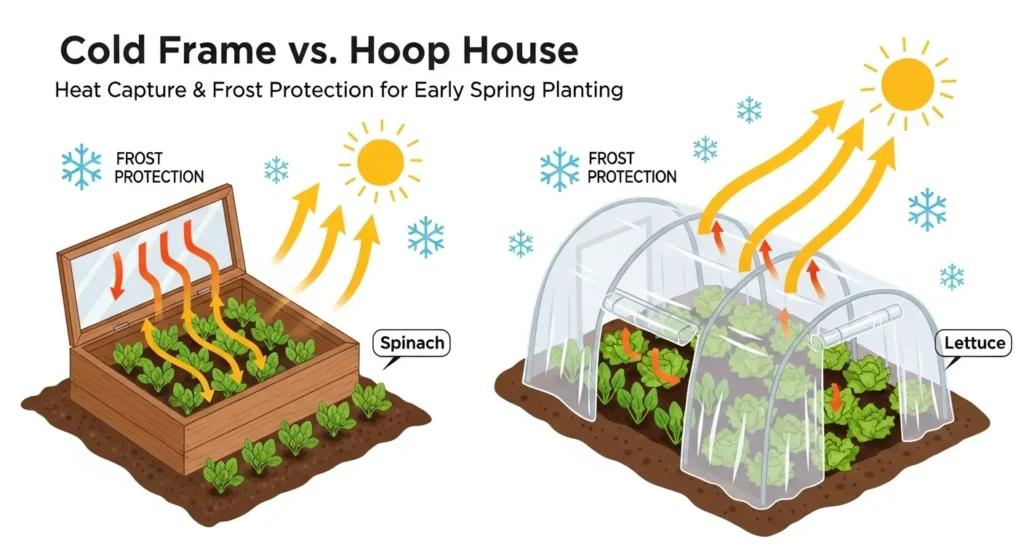
At its core, cold frame gardening is about creating a microclimate that protects plants from cold weather. A cold frame is essentially a box with a transparent lid—traditionally made from glass or plastic—that traps solar heat during the day and retains it at night. Hoop houses, on the other hand, are larger tunnel-like structures made from hoops and plastic sheeting.
Benefits of Cold Frame Gardening
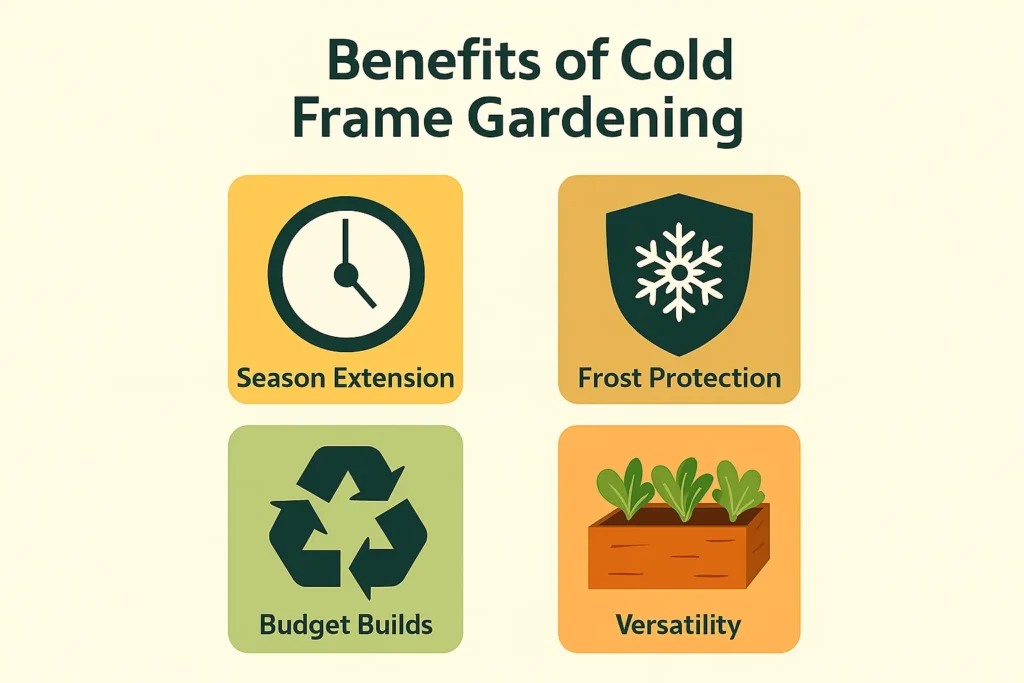
- Season Extension: Grow crops weeks or months beyond the normal outdoor season.
- Frost Protection: Shield tender plants from sudden cold snaps.
- Budget-Friendly: Build with recycled or inexpensive materials.
- Versatility: Use for seed starting in early spring or overwintering hardy crops.
Compared to greenhouses, cold frames are smaller, cheaper, and easier to build. They’re perfect for gardeners who want results without the hefty price tag.
Another advantage is the flexibility of cold frames. They can be temporary or permanent, small enough to cover a single row or large enough to span multiple raised beds. This adaptability means you can experiment with different designs until you find the one that fits your space and gardening style.
Here’s a twist many gardeners overlook: cold frames don’t just extend the season at the end of the year—they can also jump-start it in early spring. By warming the soil weeks ahead of schedule, you can sow seeds earlier than your neighbors and enjoy harvests long before the official growing season begins.
👉 Learn more about the pros and cons of each method in Urban Farm Lifestyle’s overview of hoop houses vs cold frames.
3 Budget Hoop House Builds (Step-by-Step)
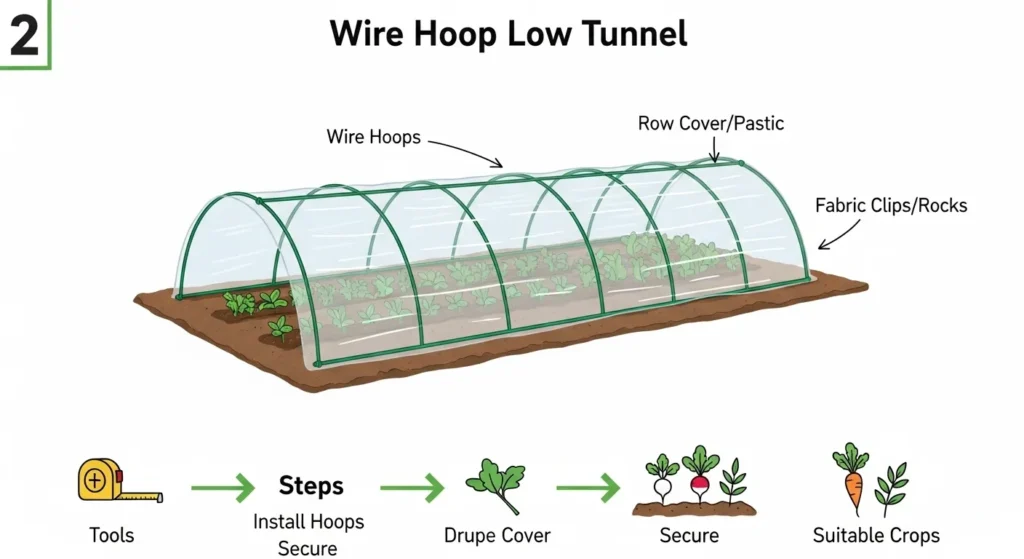
One of the best parts of cold frame gardening is how adaptable it is. You don’t need fancy equipment—just creativity and a willingness to repurpose materials. Below are three tried-and-true builds that balance affordability with effectiveness.
1. PVC Pipe Hoop House
Why it works: PVC is lightweight, flexible, and inexpensive. With a few pipes and a sheet of plastic, you can create a sturdy structure that covers an entire raised bed.
Materials Needed:
- PVC pipes (½ inch diameter)
- Rebar stakes or wooden stakes
- Clear plastic sheeting (6 mil recommended)
- Clamps or clips
Steps:
- Drive rebar stakes into the ground on both sides of your bed.
- Slide PVC pipes over the stakes to form arches.
- Drape plastic sheeting over the arches.
- Secure with clamps or bricks along the edges.
Best For: Leafy greens, spinach, lettuce, and kale.
One of the hidden strengths of PVC hoop houses is their portability. If you decide to rotate crops or shift your garden layout, the structure can be dismantled and reassembled in a new location with minimal effort. This makes it ideal for gardeners who like to experiment with different bed arrangements each season.
A small twist: while most people use clear plastic, you can also experiment with semi-opaque covers to diffuse light. This reduces the risk of scorching on sunny winter days and creates a more stable environment for delicate greens.
For detailed construction advice, check out Texas A&M’s cold frame and hoop house guide (PDF).
2. Low Tunnel with Wire Hoops
Why it works: Wire hoops are even cheaper than PVC and can be bent into shape easily. This design is perfect for smaller beds or rows of crops.
Materials Needed:
- 9-gauge wire or flexible metal rods
- Row cover fabric or plastic sheeting
- Garden clips or clothespins
Steps:
- Insert wire hoops into the soil every 2–3 feet.
- Stretch fabric or plastic over the hoops.
- Clip securely to prevent wind damage.
Best For: Carrots, radishes, and hardy greens.
Low tunnels are also incredibly versatile because you can swap out the covering depending on the season. In fall and winter, plastic sheeting provides warmth, while in spring, lightweight fabric can protect young seedlings from pests without overheating them. This adaptability makes wire hoop tunnels a year-round asset.
Here’s a curiosity-sparking twist: some gardeners double-layer their tunnels, using fabric beneath plastic. This creates an insulating air pocket that can raise the inside temperature by several degrees—enough to keep tender crops alive during unexpected cold snaps.
3. Recycled Window Cold Frame
Why it works: Old windows are perfect for cold frames because they’re already designed to let in light while insulating. This build is eco-friendly and adds rustic charm to your garden.
Materials Needed:
- Wooden boards for the frame
- Recycled window or glass door
- Hinges (optional, for easy opening)
Steps:
- Build a simple wooden box frame.
- Attach the window on top as a lid.
- Angle the frame slightly southward for maximum sunlight.
Best For: Overwintering herbs, seedlings, and hardy greens.
The charm of a recycled window cold frame is that no two are alike. Each one carries a bit of history, whether it’s an old sash window from a farmhouse or a salvaged pane from a renovation project. This not only saves money but also adds character to your garden space.
A twist worth considering: because glass retains heat differently than plastic, these cold frames can sometimes overheat on sunny days. Experienced gardeners often prop the lid open slightly with a stick to regulate airflow—a simple trick that prevents plants from wilting under too much warmth.
What to Plant in Cold Frames (Oct–Dec)
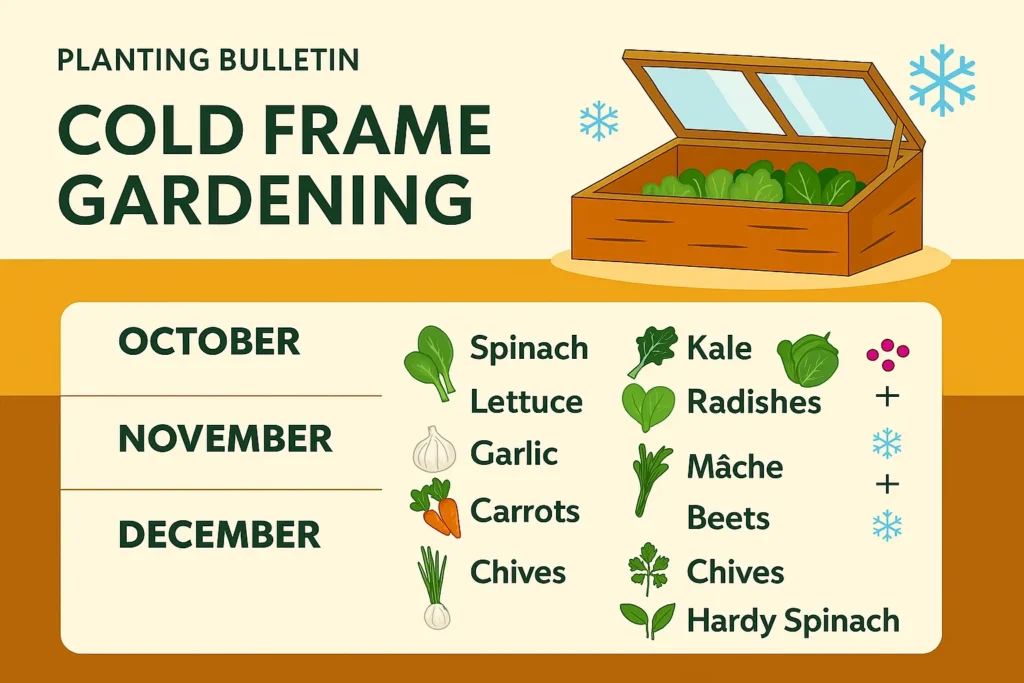
Cold frame gardening isn’t just about building structures—it’s about knowing what to grow when. The key is choosing crops that thrive in cooler temperatures and can handle shorter daylight hours.
October Planting
October is the transition month. Temperatures are dropping, but the soil still holds warmth. This is the perfect time to plant fast-growing greens and root crops.
Best Crops:
- Spinach
- Kale
- Lettuce (butterhead, romaine)
- Radishes
Why They Work: These crops germinate quickly and can tolerate light frosts. Under a cold frame, they’ll continue producing well into winter.
Another October advantage is succession planting. By sowing small batches of radishes or lettuce every two weeks, you can stagger your harvests and avoid a glut of produce all at once. This keeps your cold frame productive and ensures a steady supply of fresh greens.
Here’s a twist: some gardeners even tuck in edible flowers like calendula or violas alongside their greens. These not only brighten up the cold frame but also provide edible garnishes for winter salads.
November Planting
By November, daylight is shorter and frost is more frequent. Focus on crops that can overwinter and be harvested in early spring.
Best Crops:
- Garlic
- Carrots
- Mâche (corn salad)
- Beets
Why They Work: Garlic and carrots can be planted now and harvested in spring. Mâche is a cold-hardy green that thrives in low light.
November is also a great time to experiment with root crops that sweeten after frost. Carrots and beets, for example, develop a richer flavor profile when exposed to cooler temperatures. Cold frames protect them from freezing solid while allowing this natural sweetness to develop.
A curiosity-sparking twist: some gardeners intentionally leave carrots in the ground under a cold frame all winter, harvesting them as needed. The soil acts like a natural refrigerator, keeping the roots crisp and fresh until spring.
December Planting
December is the toughest month, but with the right crops, your cold frame can still be productive.
Best Crops:
- Parsley
- Chives
- Overwintering onions
- Hardy spinach varieties
Why They Work: These herbs and greens are incredibly resilient. They may grow slowly, but they’ll survive the cold and bounce back in early spring.
December is also the month to think strategically about overwintering. By planting hardy herbs and onions now, you’re essentially setting the stage for an early spring harvest. These crops will establish roots during the cold months and surge into growth as soon as daylight increases.
Here’s a twist: some gardeners use December cold frames not just for planting but for storage. Root vegetables like turnips or parsnips can be kept in the soil under protection, turning your cold frame into a living pantry.
Tips for Success in Winter Gardening
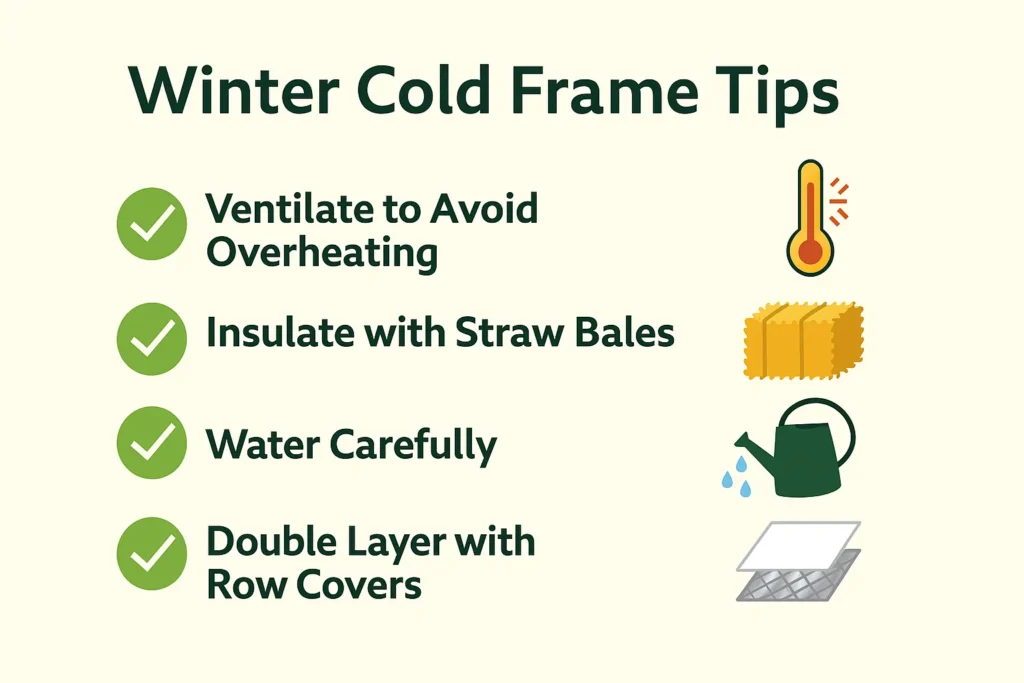
Even with the best cold frame, success depends on how you manage your microclimate.
- Ventilation: On sunny days, open your cold frame to prevent overheating and mold.
- Insulation: Add straw bales or blankets around the frame for extra warmth.
- Watering: Plants need less water in winter, but don’t let the soil dry out completely.
- Layering: Use row covers inside your cold frame for double protection.
Another overlooked tip is to monitor soil temperature, not just air temperature. A simple soil thermometer can tell you whether conditions are right for germination or whether you need to add extra insulation. This small step can make the difference between thriving crops and disappointing results.
And here’s a twist: don’t underestimate the power of reflective surfaces. Some gardeners place aluminum foil or white boards on the north side of their cold frames to bounce extra light onto the plants. This clever trick maximizes limited winter sunlight and boosts growth.
Conclusion
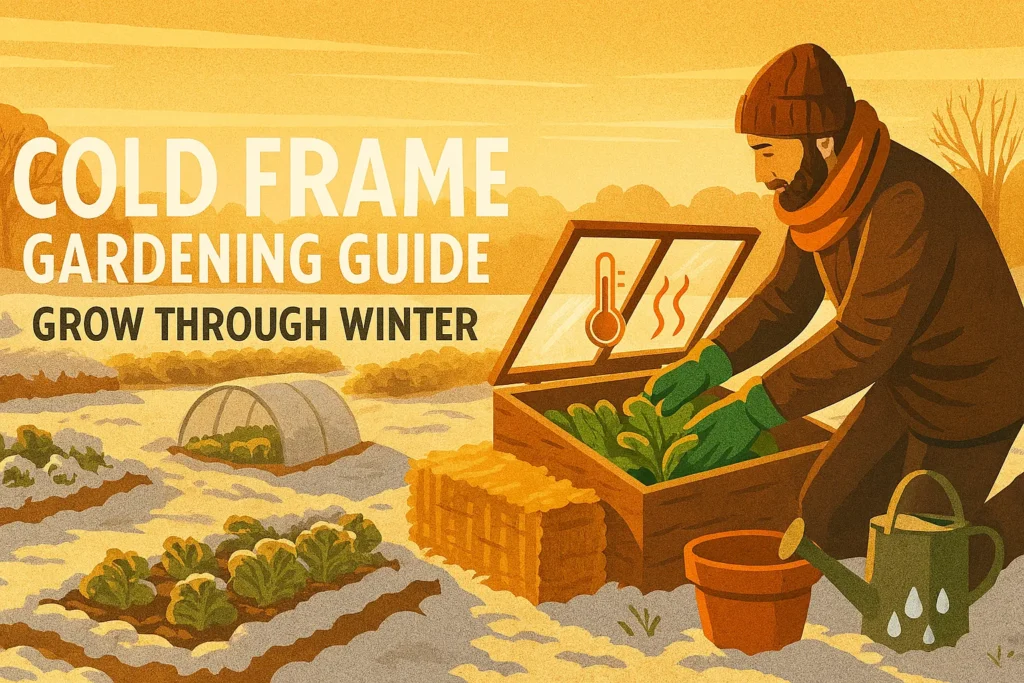
Cold frame gardening is proof that you don’t need a greenhouse—or a big budget—to enjoy fresh produce year-round. With a few simple materials, you can build protective structures that extend your harvest well into the colder months.
By trying one of the three budget hoop house builds and following the October–December planting guide, you’ll not only save money but also gain the satisfaction of harvesting your own food when most gardens are dormant.
Cold frame gardening is more than just a technique; it’s a mindset. It teaches patience, creativity, and the joy of working with nature’s rhythms rather than against them. Each season brings its own surprises, and the cold frame becomes a stage where those surprises unfold.
The real twist is this: once you’ve experienced the satisfaction of harvesting fresh food in the dead of winter, you’ll never look at your garden the same way again. Cold frame gardening doesn’t just extend your season—it transforms your relationship with the land, reminding you that abundance is possible even in the coldest months.
So as the days grow shorter and frost settles in, don’t pack away your gardening tools. Instead, embrace the season with cold frame gardening—a practice that rewards you with freshness, resilience, and joy when you need it most.
❓ Frequently Asked Questions (FAQ) on Cold Frame Gardening
1. What is cold frame gardening, and why is it useful?
Cold frame gardening is the practice of using simple, protective structures—like wooden boxes with transparent lids or hoop houses covered in plastic—to trap heat and shield plants from frost. It’s useful because it extends the growing season, protects crops from sudden weather changes, and allows you to harvest fresh produce even in late fall and winter.
2. How does cold frame gardening differ from greenhouse gardening?
While both methods extend the growing season, cold frame gardening is smaller in scale, more affordable, and easier to build. Greenhouses are permanent structures that require more space and investment, whereas cold frames can be temporary, portable, and made from recycled or low-cost materials.
3. What can I plant in a cold frame from October to December?
October: Spinach, kale, lettuce, radishes
November: Garlic, carrots, mâche (corn salad), beets
December: Parsley, chives, overwintering onions, hardy spinach. These crops thrive in cooler temperatures and shorter daylight hours, making them ideal for cold frame gardening during fall and early winter.
4. Can cold frame gardening work in very cold climates?
Yes. In colder regions, gardeners often add insulation such as straw bales, blankets, or double layers of plastic. Some even use row covers inside the cold frame for extra protection. With these adjustments, cold frame gardening can succeed even in harsh winters.
5. How do I prevent overheating in a cold frame?
Ventilation is key. On sunny days, prop open the lid or lift the plastic covering to release excess heat. This prevents mold, wilting, and temperature spikes that could harm your plants.
6. Is cold frame gardening only for fall and winter?
Not at all. Cold frame gardening is also valuable in early spring. By warming the soil weeks ahead of the season, you can start seeds earlier and enjoy harvests long before outdoor conditions are favorable.
7. How often should I water plants in a cold frame during winter?
Plants grow more slowly in winter and require less water, but the soil should never be allowed to dry out completely. Check moisture levels weekly and water sparingly to keep the soil evenly moist.
8. Can I use a cold frame for storage as well as planting?
Yes. Many gardeners use cold frames in December and beyond to store root vegetables like carrots, turnips, or parsnips. The soil acts as a natural refrigerator, keeping produce crisp and fresh until you’re ready to harvest.
9. Why should I try cold frame gardening instead of just buying produce in winter?
Cold frame gardening saves money, reduces reliance on store-bought produce, and provides fresher, more nutritious food. Beyond the practical benefits, it also offers the joy of gardening year-round and strengthens your connection to the natural rhythms of the seasons.

